Top 10 Largest Mosques in the World in 2025
By ICON TEAM | Published on Jul 17, 2025
List Of Top 10 Largest Mosques in the World 2025:
Mosques are architectural wonders, cultural icons, and spiritual havens that showcase the rich history of Islamic civilization. They are more than just places of prayer. The biggest mosques in the world as of 2025, measured by the number of worshippers they can hold, are monuments to human creativity, religion, and history. Millions of pilgrims and tourists visit these imposing buildings every year, which frequently combine modern innovation with traditional Islamic style. The top ten mosques in the world are examined in detail here, highlighting their importance, size, and distinctive characteristics.
1. Masjid al-Haram (The Great Mosque of Mecca), Saudi Arabia:
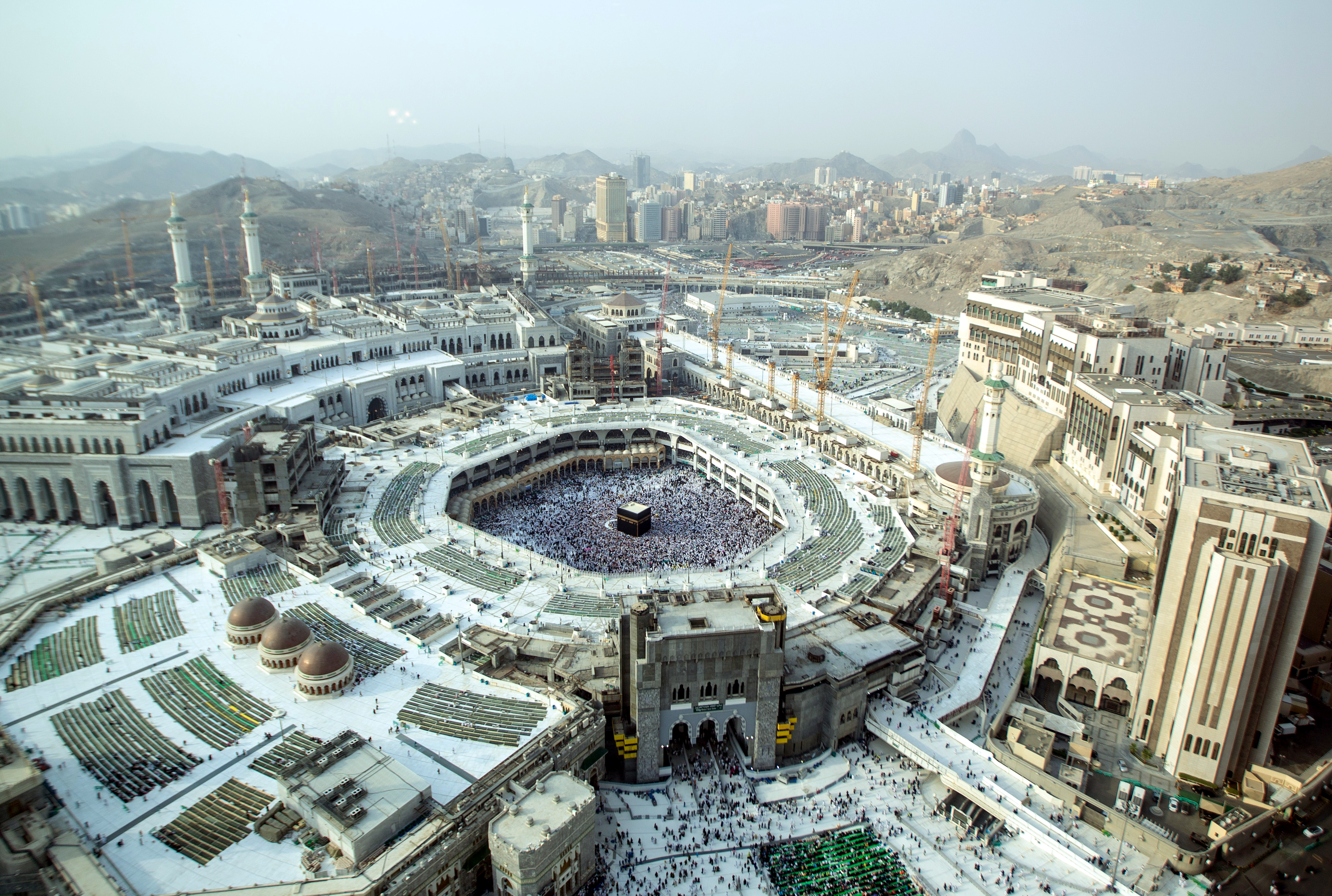
The largest and holiest mosque in Islam is Masjid al-Haram in Mecca, Saudi Arabia. During the Hajj pilgrimage, it can hold up to four million worshippers. This mosque is the spiritual hub of Islam, encircling the Kaaba, the holy black cube that Muslims around the world face when they worship. With a total area of over 356,800 square meters, it has experienced numerous extensions to accommodate the increasing number of pilgrims, especially during the reigns of Saudi rulers King Fahad and King Salman. Nine minarets, multi-story prayer areas, and contemporary conveniences like air conditioning, escalators, and the Zamzam well are all aspects of the mosque. It attracts millions of pilgrims each year for the Hajj and Umrah because of its expansive courtyards and elaborate architecture, which serve as a symbol of togetherness for Muslims worldwide.
2. Al-Masjid an-Nabawi (The Prophet’s Mosque), Medina, Saudi Arabia:
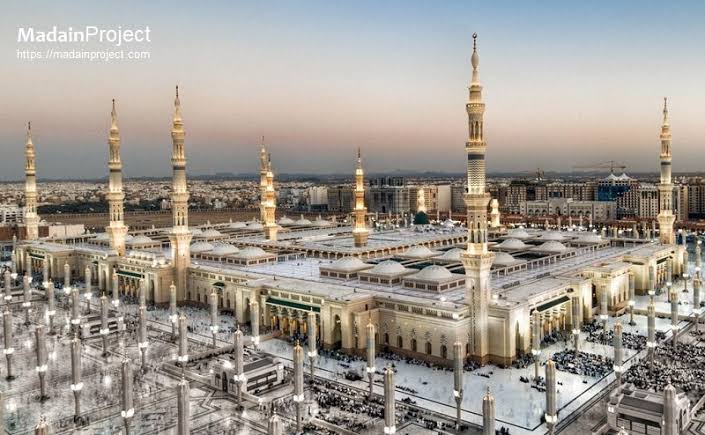
More than 1.5 million worshippers may be accommodated at Medina, Saudi Arabia's Al-Masjid an-Nabawi, the second-holiest place in Islam. Constructed by the Prophet Muhammad in 622 CE, it is a major place of pilgrimage and contains his burial beneath the recognizable green dome. The mosque, which is over 400,500 square meters in size, has 10 minarets and an open-air layout with large courtyards. Under the direction of the General Authority for the Care of the Two Holy Mosques, it combines traditional Islamic design with contemporary additions, including cutting-edge amenities like retractable umbrellas for shade. The mosque is a haven for spiritual contemplation because of its historical significance and calm atmosphere.
3. Djamaa el Djazaïr (Great Mosque of Algiers), Algeria:
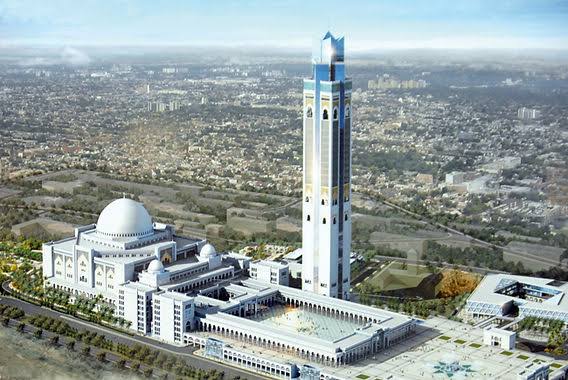
With a capacity of 120,000 worshippers, Djamaa el Djazaïr, also called the Great Mosque of Algiers, was inaugurated in 2019 and is the largest mosque in Africa and the third largest in the world. With a total area of 27.75 hectares and the highest minaret in the world at 265 meters, it is situated along Algeria's Mediterranean coastline. The mosque, which was constructed by a Chinese company at a cost of around $900 million, has modernist architecture with North African and Arab influences, including marble and wood accents. It is a center of culture and education because it has a museum, library, and research center. Its majesty and capability confirm its place among the world's giants, despite claims that it was a vanity project of former President Abdelaziz Bouteflika.
4. Imam Reza Mausoleum, Mashhad, Iran:
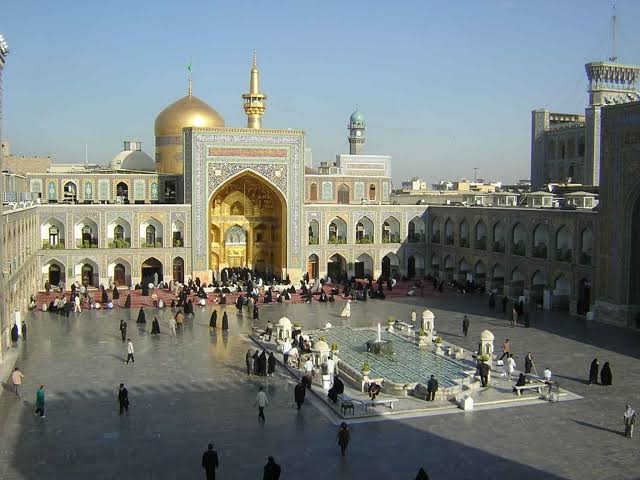
With a 331,000-square-meter complex that can accommodate 700,000 worshippers, the Imam Reza Mausoleum in Mashhad, Iran, comes in at number four. The mosque, library, museum, and seminaries are all part of this expansive complex, which is centered on the tomb of Imam Reza, the eighth Shia Imam. It is Iran's most frequented holy site, with up to 20 million visits a year dating back to the Timurid empire in the 13th century. The complex exemplifies Persian architectural beauty with its elaborate tilework, golden domes, and expansive courtyards. Its spiritual and cultural significance is further highlighted by the fact that Shia Muslims use it as a pilgrimage site.
5. Istiqlal Mosque, Jakarta, Indonesia:
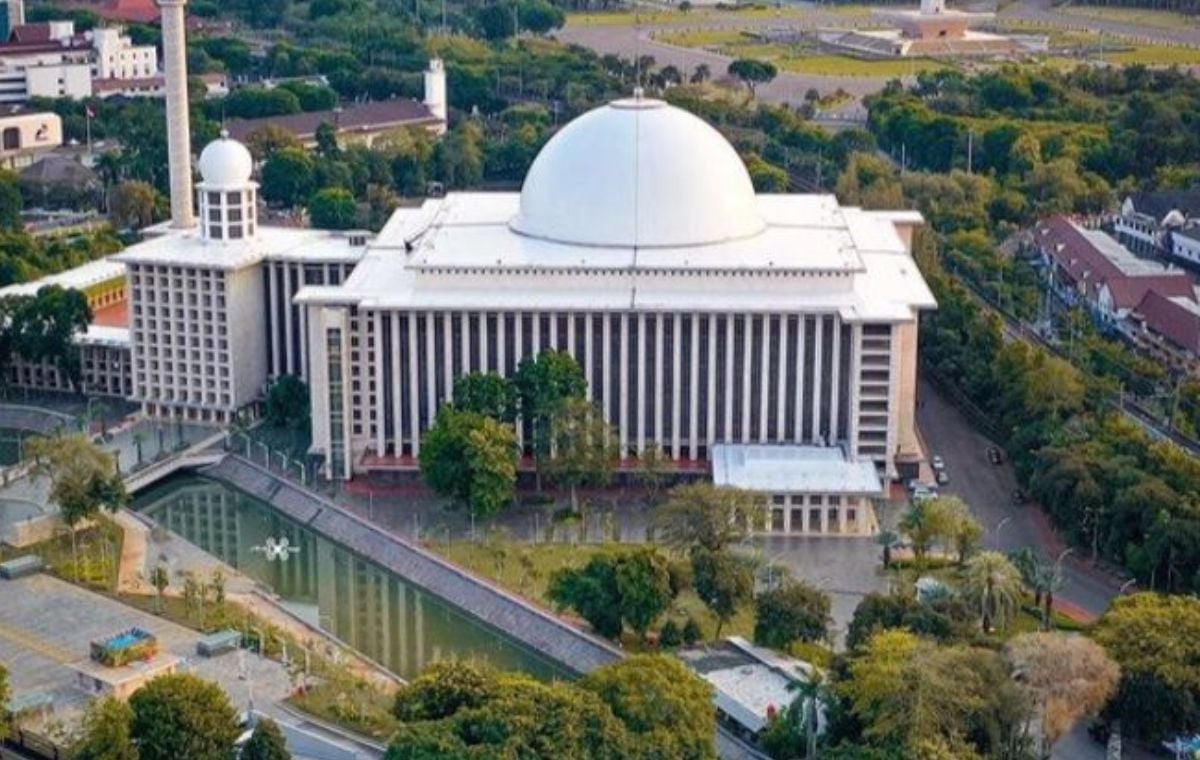
With a 10-hectare structure that can hold up to 200,000 worshippers, the Istiqlal Mosque in Jakarta, Indonesia, is the biggest mosque in Southeast Asia. Its contemporary architecture, which was constructed in 1961 to commemorate Indonesia's independence, has a colossal dome and a tall minaret that, with its seven gates, represents the seven heavens. The mosque, which unites traditional and modern Islamic elements, is a national symbol of unification for Indonesia's large Muslim population and is situated in the center of Jakarta. It is an important landmark in the area because of its capacity and cultural value.
6. Faisal Mosque, Islamabad, Pakistan:
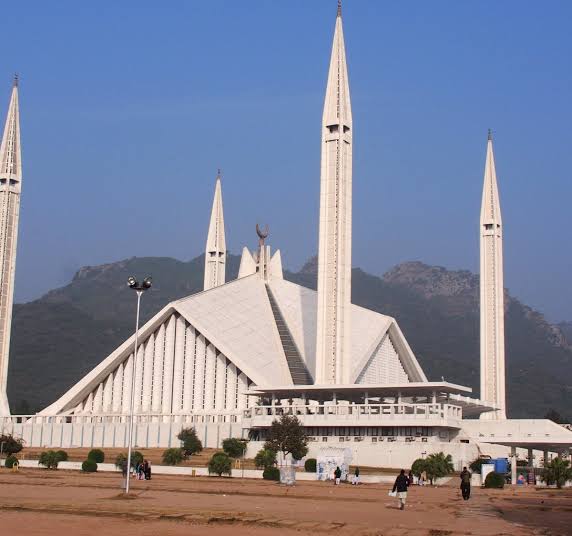
With a capacity of more than 100,000 worshippers, the Faisal Mosque in Islamabad, Pakistan's largest mosque, comes in sixth place. Its distinctive tent-like shape, created by Turkish architect Vedat Dalokay and funded by Saudi King Faisal, stands out against the picturesque Margalla Hills and traditional Islamic buildings. It was finished in 1986. The mosque, which is 5,000 square meters in size, blends Mughal and modern influences with its elaborate calligraphy and four 80-meter minarets. It attracts both worshippers and tourists due to its remarkable aesthetics and functions as a hub for religious events and education.
7. Hassan II Mosque, Casablanca, Morocco:

The seventh-ranked Hassan II Mosque, which can accommodate 105,000 worshippers, is situated in Casablanca, Morocco, on the Atlantic coast. Under the direction of King Hassan II, French architect Michel Pinseau created the design, which was finished in 1993. Its glass hall provides breathtaking views of the ocean, and its 210-meter minaret—the tallest in the world—projects a laser beam toward Mecca. The mosque, which was constructed over nine hectares at a cost of $800 million thanks to public donations, is a masterwork of architecture with heated floors, a sliding roof, and beautiful Moroccan tilework.
8. Badshahi Mosque, Lahore, Pakistan:
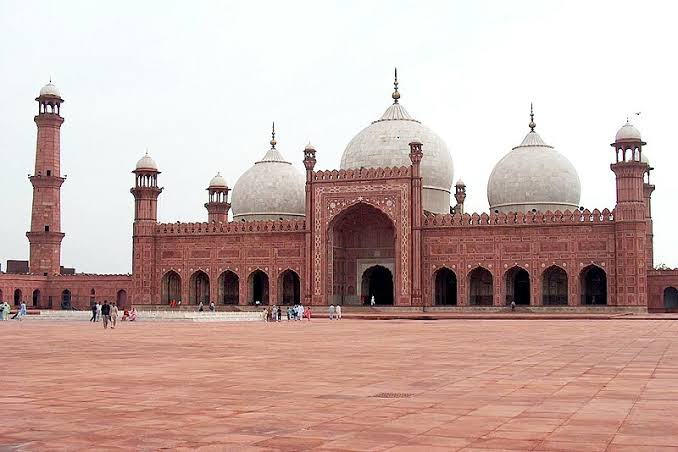
Built in 1673 by the Mughal Emperor Aurangzeb, the Badshahi Mosque in Lahore, Pakistan, ranks ninth with a capacity of 60,000 worshippers. Its expansive courtyards and red sandstone exterior perfectly capture Mughal grandeur, and it was the largest mosque in the world until 1986. With its elaborate calligraphy and marble interiors, this 25,000-square-meter structure is still one of Pakistan's most popular tourist destinations and places of worship. Visitors from all over the world are still enthralled by its architectural beauty and historical significance.
9. Al-Saleh Mosque, Sana’a, Yemen:
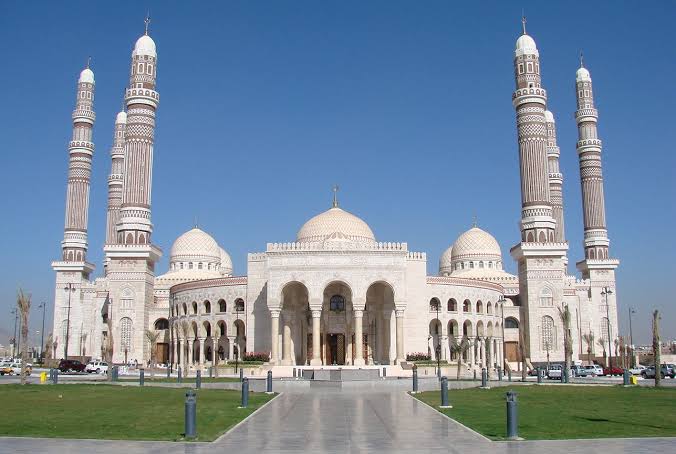
The Al-Saleh Mosque in Yemen, which opened its doors in 2008, is ranked ninth and can accommodate 44,000 worshipers. The president of Yemen paid $60 million to build this contemporary mosque in Sana'a, which doubles as a place of worship and a learning center complete with classrooms and libraries. Despite Yemen's difficulties, it is a notable monument thanks to its architecture, which combines modern and traditional Islamic aspects. The mosque's cultural significance is highlighted by its role in promoting education and community.
10. Sheikh Zayed Grand Mosque, Abu Dhabi, United Arab Emirates:
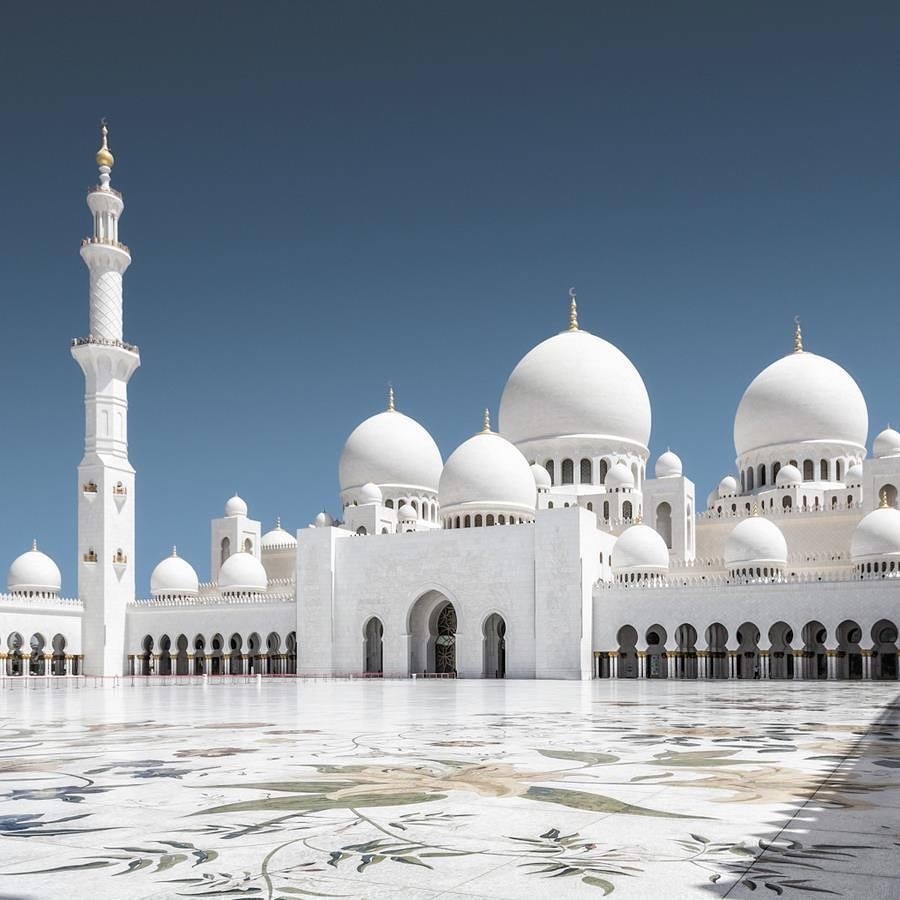
The Sheikh Zayed Grand Mosque in Abu Dhabi, United Arab Emirates, which can accommodate 40,000 worshippers, completes the list. It is famous for its 82 domes, white marble domes, and the largest hand-knotted carpet in the world. It was finished in 2007 and occupies 22,000 square meters. Sheikh Zayed bin Sultan Al Nahyan's mosque, which combines luxury and devotion, has seven Swarovski chandeliers and elaborate floral designs. It is a popular tourist destination worldwide because of its semi-precious stone inlays and reflected pools.
Comments 0